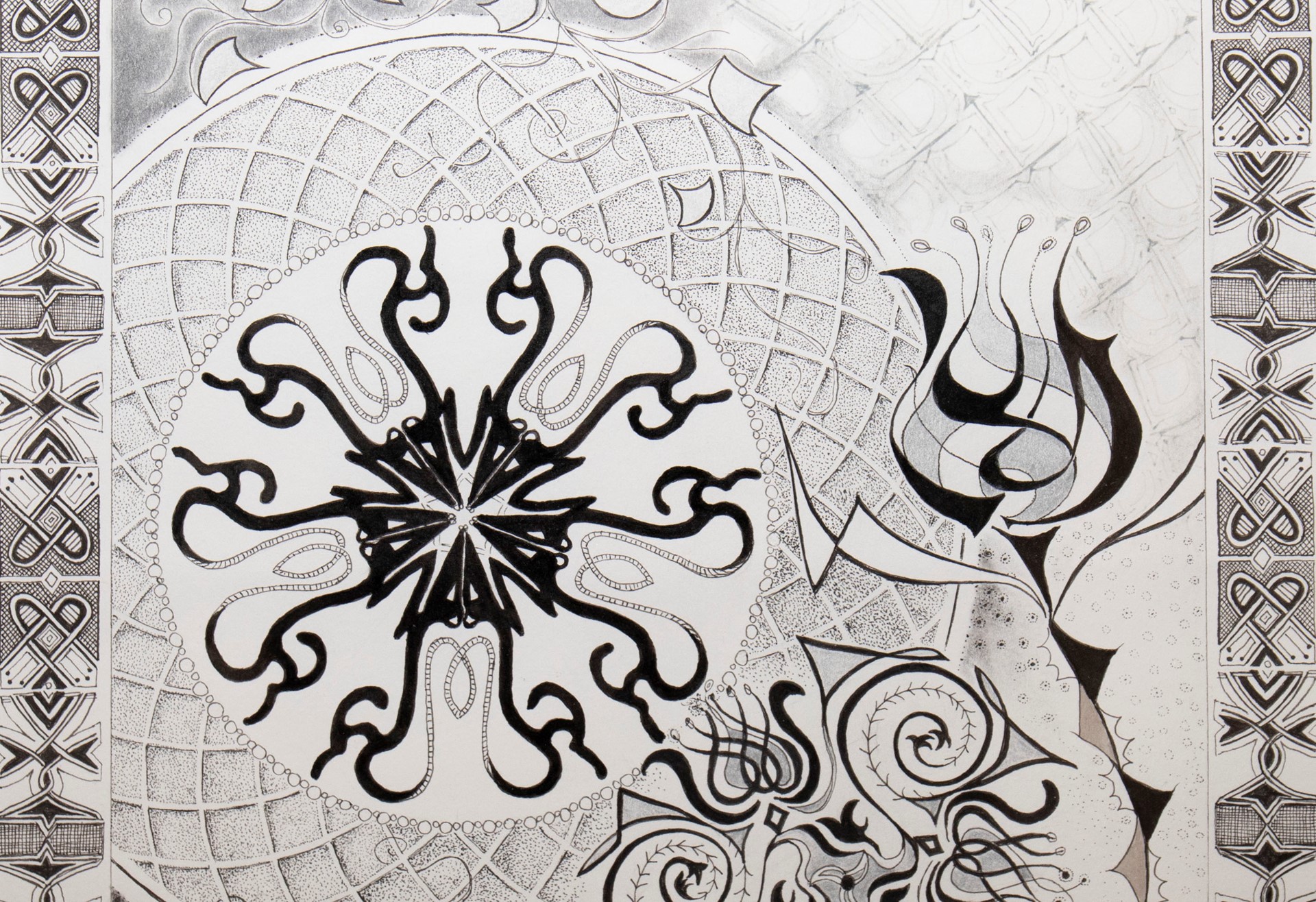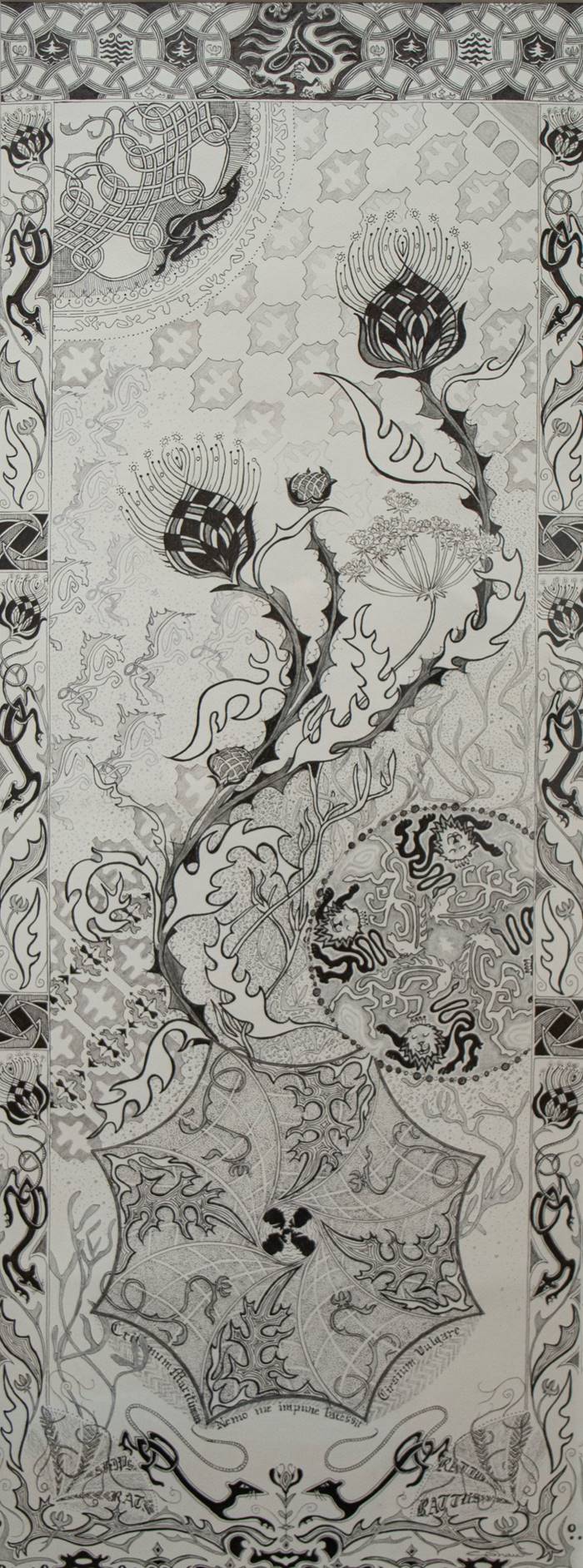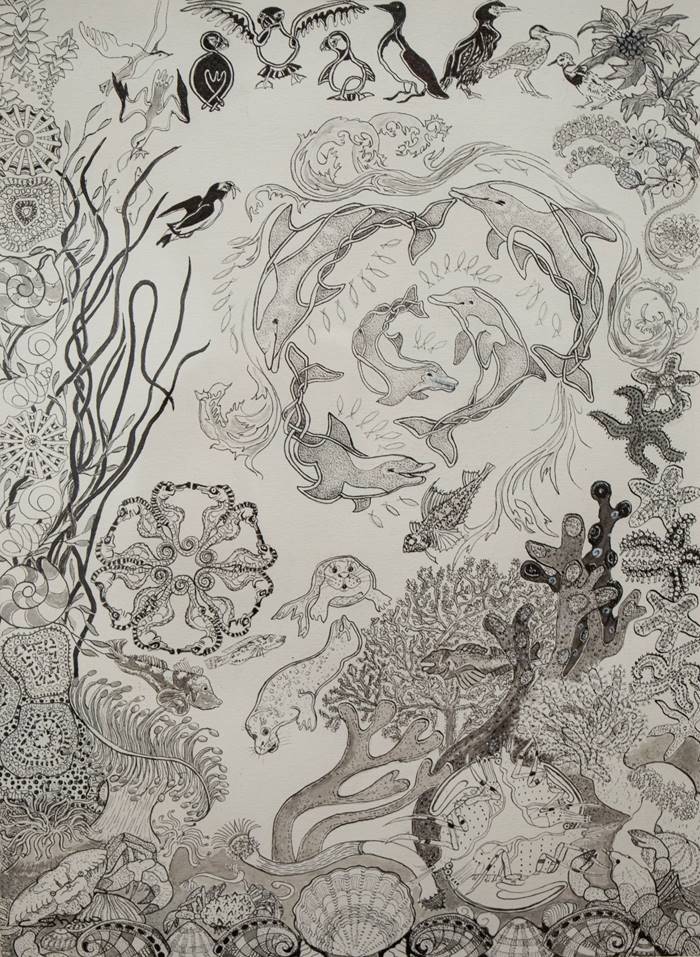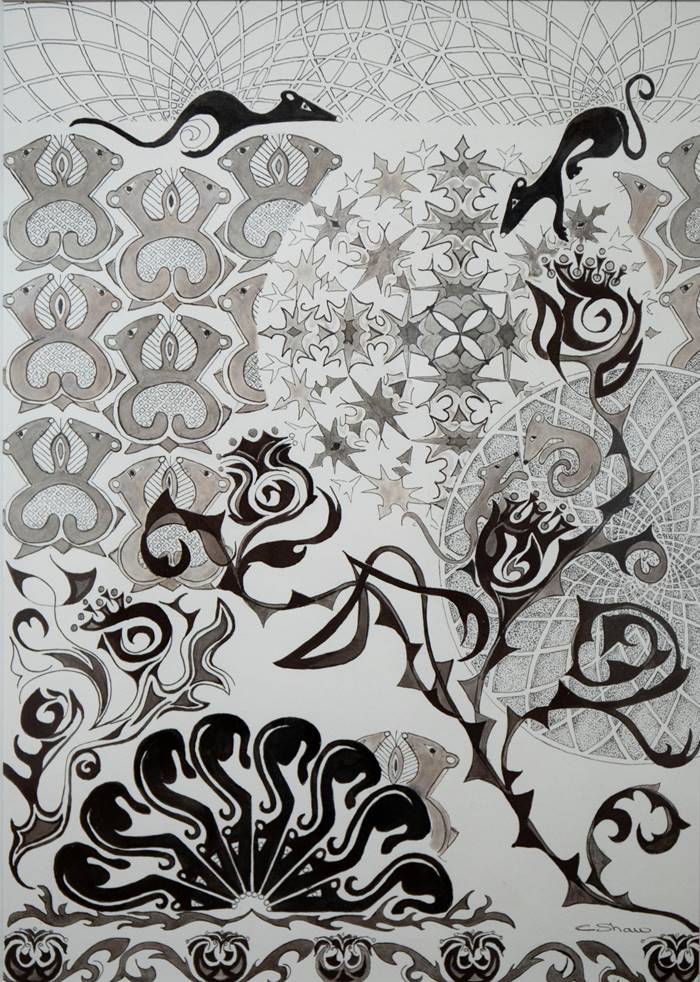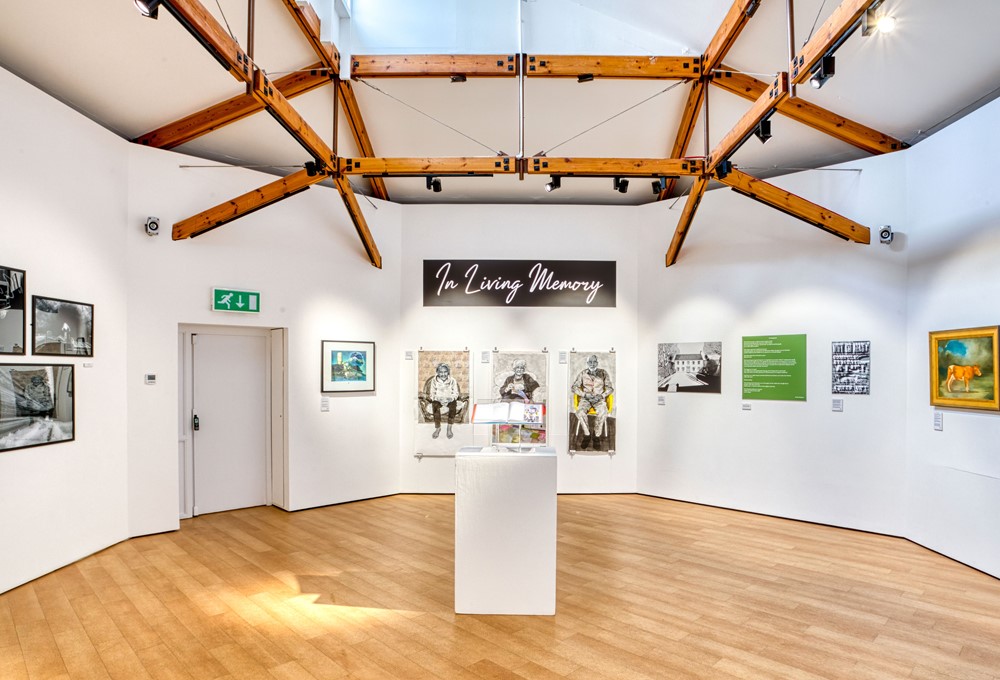My recording of wild flowers had been ongoing for some time and I was now familiar with many species. Previous exploration of ink in 2015, provided the knowledge of pitfalls and
advantages regarding the application of various types of text to a dérive canvas, with an acrylic paint base.
I researched Scotland and Brecqhou at the library. I found the 10th book on the shelf for ‘Scotland’ (‘How the Scots Invented the Modern World’ by Arthur Herman) and as I did with the only book available for ‘Brecqhou’ on the Local Studies shelf, (‘A Very Private
Island’ by Peter J. Rivett). Historical, legendary, and natural elements were noted:
In 1993 Brecqhou was bought by brothers Frederick and David Barclay, who also owned the ‘Scotsman’ newspaper. This link led to thoughts of symmetry hence the Celtic pattern which evolves from rotated images. Scottish research led me to the illuminated ‘Book of Kells’ and the Celtic patterns contained within it. This style inspired my entire project. The Book of Kells is a collection of illustrated religious manuscripts worked on by monks and begun on the Scottish island of Iona, then copied over the years by scribes. La Têne style of Celtic
pattern is more closely relevant to the Bailiwick of Guernsey and nature. William Morris, (who designed a window in St Stephens Church in Guernsey), was of Scottish parentage and was inspired by the Book of Kells and the Celtic influences that also led to Art Nouveau. Morris went on to create wallpaper designs using elements of nature in symmetrical patterns without losing their integral form.
My earlier work on this project began primarily in the Celtic style with symmetrical
patterns, but I too began to appreciate that nature’s own rich pattern was sometimes
preferable and reverted to this. Some of the main features reflect the flowing lines of Art Nouveau, which was instrumental in the Celtic revival. I explored a new style of knot
design by reinventing sketches of animals and birds which were later added to individual pieces. Some were taken further into abstraction and digital combinations as possible
product design in the future.




